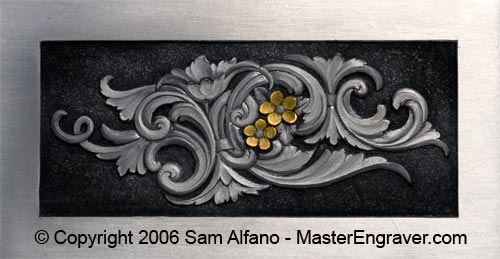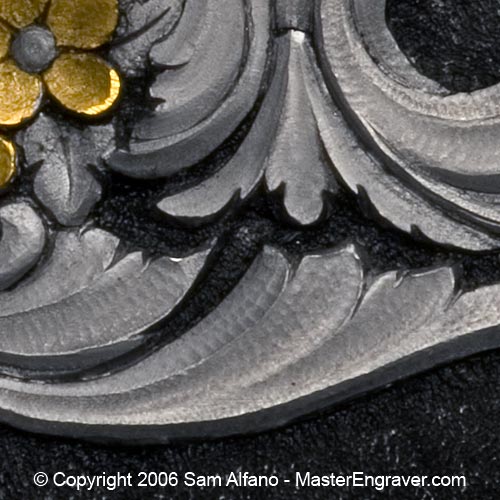For many years I operated my GraverMax at stroke speed of 3,000 strokes per minute.
This was a comfortable setting for the majority of my work, and I rarely changed unless I was doing exceptionally heavy engraving with a large handpiece or channel setting diamonds, where slower speeds produce more impact and better results.
One day I sat down to do some fine shading on a small sterling silver tie bar I'd been working on. Forgetting that my GraverMax was set to 1600 strokes per minute, I hooked up a Monarch handpiece, tuned the regulator, and began to engrave. I was instantly aware of the slow speed as it was something I'd not used for such fine work, and figured I'd change it after the cut was complete. I didn't change it. The slower stroke speed delivered a very controlled cut in soft sterling silver, and while I continued to use the slow speed, I figured it was all in my head and the Monarch handpiece couldn't possibly be responding as well as it was. To make a long story short, after many years of running 3,000+ strokes per minute, I find myself settling into slower speeds and really liking the results.
Since the GraverMach has been introduced, I can now run up to 8,000 strokes per minute. While I'm still experimenting with these warp speeds, I still find that for much of my work I operate at around 2,300 strokes per minute. For stippling I bump the speed to around 5,000 strokes and I can cover a lot of area in a very short time. The GraverMach's responsiveness, power, and versatility, has changed the way I engrave.
During Grandmaster's 2006 I had the privilege of assisting Phillipe Grifnee during his class. While Phil did all of his demonstrations with hammer & chisel, I worked out a GraverMach version for us power users. For hogging out the large amount of background in the photo below, I used a Magnum handpiece with stroke speed set to around 1,500.

To achieve a classic hammered look, I lowered the speed to about 1,000 strokes per minute and used a 901 handpiece for the sculpting and modeling in the closeup photo below.

There have been scientific studies about how humans react to certain frequencies. While some frequencies are comfortable, others may be unsettling. Experiment with different stroke speeds and see if you find a "sweet spot." Slow speeds can produce beautiful results in sculpted work, and can even produce hammer & chisel effects.
Keep in mind that there are no right or wrong speeds. Use whatever's comfortable and produces the results you're after. |





